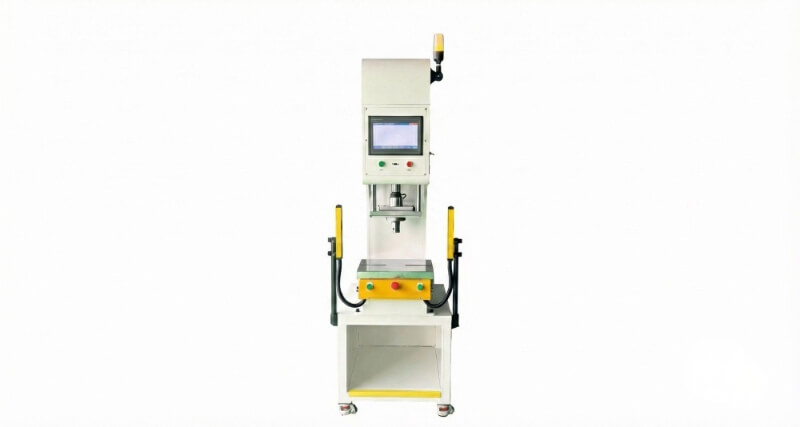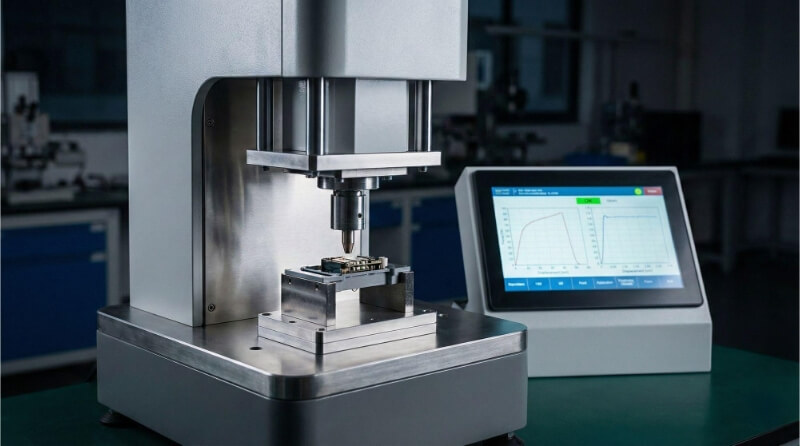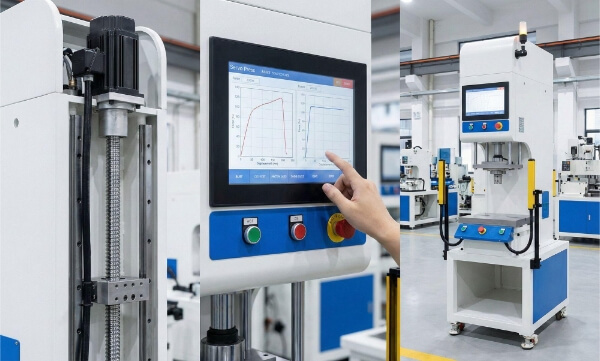I am often amazed at the impact of CNC machining on the manufacturing industry. Our work is a blend of art and science.
CNC Machining (Computer et al.) is a manufacturing process that uses computers to control machines. CNC machining, essential for precision in metal parts that we specialize in here, is crucial in manufacturing such products.
Understanding CNC machining is essential, both from my experience and from clients such as Jack Garcia. You are at the right place if you work in manufacturing or are sourcing components. Let us get started!
Origins and Evolution
It is impressive to see the journey that sheet metal fabrication has taken. The advances we rely on today are rooted in decades of history. Understanding our past will help us understand today’s precision and efficiency.
Historical roots of computer control: From manual to electronic control
Machine operators operated machines manually before the advent of digital computers and programming. Imagine being in the middle of a busy factory surrounded by metal on metal. Machinists require extensive training, expertise, and a steady touch to ensure consistency and accuracy. Manual methods require a high level of skill but are time-consuming. They also leave room for human errors.
The arrival of computers brought about a paradigm shift. In the 1940s, the introduction of numerical controls (NC), using punched tape, marked the first departure from manual machining. This tape allowed engineers to give machine commands. It was a giant leap forward. This was the beginning of manufacturing automation.
Machining capabilities improved as technology advanced. In the 1970s, NC became CNC, Computer Numerical Control. Computers could control machines instead of punched tapes. This offered a level of precision, flexibility, and efficiency previously unimaginable. This revolution changed the landscape of manufacturing forever.
The history of technological advances
- 1940sIntroduced Numerical Control (NC), using punched tapes.
- 1970s:As microcomputers became accessible and affordable, the transition from NC to CNC began. This decade saw the integration of CAD (Computer Aided Design) and CNC (Computer Aided Manufacturing) systems to improve precision and capabilities further.
- 1980s-1990s:Rapid technological advances led to multi-axis machines and increased automation. These machines could work simultaneously on multiple axes, producing complex and intricate parts.
- The 2000s:The 2000s saw the rise of the internet and software advances that paved the road for remote monitoring and control of CNC machines. IoT was integrated into CNC machines in this era to enable real-time monitoring and predictive maintenance.
- 2010s:In the 2010s and beyond, there is a strong push for smart factories and Industry 4. CNC machines are now equipped with AI and Machine Learning capabilities to ensure optimal efficiency, self-correction, and minimal waste.
Basic Principles for CNC Machining
The CNC machine is the lifeblood of our company. To truly understand its value, it is essential first to understand its fundamental principles.
Definitions and Core Concepts
Computer Numerical Control is the name of this process. At its core, CNC machining is a method whereby computer software controls the movements of machinery and factory tools. It is not only about computers telling machines how to work. Precision, automation, and consistency are key.
- Programming:First, you must create a CNC program. This is a list with precise instructions that the machine must follow. People use CAD software to create a digital 3-D design. CAM software converts This to a series of numeric codes (Computer Aided Manufacturing). This code gives the directions needed to move the machine.
- Coordination System: Each CNC machine uses a coordinate system, usually Cartesian and defined by the X-Y-Z axes. Some devices have up to 6 axes, allowing them to do more complex and multidimensional work.
- Tool Paths: These are the paths the machine tool will take, derived from the digital design. The tool path determines the machine’s speed and depth.
Mechanism of Operation
Let us take a look at how this wonder works:
- Initialization:When you turn on the CNC machine, it goes through a process called ‘homing’ or ‘referencing.’ The machine will move its tools into a preset position to ensure a consistent start for every project.
- Loading Programs:The numerical code is created by the CAD/CAM software and then loaded on the CNC machine. This code is the blueprint of the CNC machine.
- Material Positioning:Shengen places his metal workpiece securely on the machine’s table. The placement of the workpiece is critical, as misalignment could lead to errors or damage.
- Execution:The machining process begins once all the components are in place. Following the loaded program, the machine’s tool moves precisely along defined paths to cut, shape, or drill the workpiece.
- Continuous Monitoring: CNC can run without constant human interaction. It is essential to check the process for errors or anomalies and ensure the final product meets desired specifications.
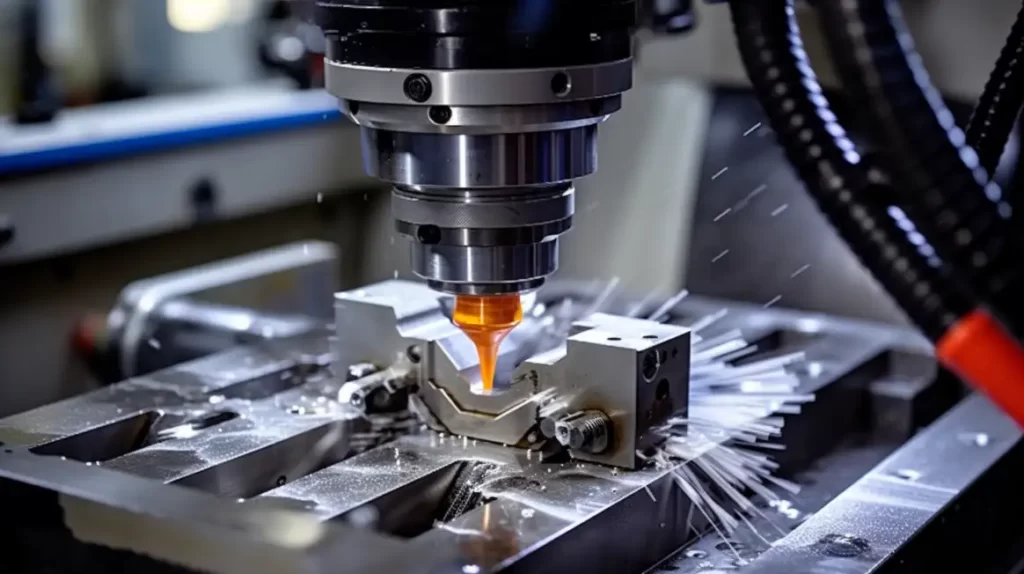
Types CNC Machines
Have you ever wondered what types of CNC machines we use to achieve our unmatched quality? Let me take you through the most common ones.
Milling Machines
The milling machine is the most common CNC machine. The machines remove material by rotating a tool. The machine moves the piece of work in a specific direction, defined by the X-Y-Z axes. This allows for precise shaping and cutting. Milling machines can produce flat surfaces or intricate designs. They are the workhorses in the CNC world.
Lathes
The lathe, or CNC-turning machine, operates on a different principle than milling machines. Materials with symmetrical shapes are produced by rotating the workpiece against a fixed tool. Think of it like a metal potter’s wheel where the rotating piece gets perfectly chiseled. People use lathes to make items ranging from musical instruments to bolts.
Plasma Cutters
Plasma cutters are where precision and power meet. They use a stream of high-velocity ionized gases, or plasma, to cut through electrically conducting materials, such as metals. The heat from the plasma melts metal, and the speed blows it away. This results in a clean, precise cut. Plasma cutters are our go-to tool when we have to cut thick metal sheets in Shengen.
Laser Machines
Laser-cutting machines use focused light beams to achieve some of the most precise cuts. They are intense and concentrated. They melt or burn through the material to create intricate designs. Lasers are non-contact, so they wear out less and are more durable.
EDMs (Electrical Discharge Machines)
EDM, also known as spark machining or EDM for short, works on a fascinating principle. An electrode creates sparks to remove material. It is ideal for delicate operations and when working with more complex materials. Wire EDMs use a thin, flexible wire as an electrode. Die-sinking EDMs use pre-shaped electrodes to create the desired shape.
The Main Components in a CNC Machine
Each component is crucial to the success of the final product. Let me deconstruct the machine and introduce you to the critical elements of a CNC.
The Control Unit
The brains of the operation. It is the brain of your operation! The CNC software here interprets and executes the commands from the CAD/CAM program. It has a simple interface that allows Shengen operators to enter orders, monitor operations, and make adjustments as needed.
Machine Table
Imagine the machine table like a stage where all the action occurs. The platform holds the workpiece in place while the machining process takes place. The machine table may move in multiple directions, depending on the type of CNC machine and the job’s complexity. This feature enables the manipulation of the workpieces from various angles. The table must be precise and sturdy because imperfections can cause inaccuracies in the final product.
Spindles, Tool Changers
Cutting tools are housed in spindles, which guide their movements. The spindles rotate at either a constant speed or varying speeds, which is crucial for cutting, drilling, or shaping a workpiece. Given the versatility of Shengen’s projects, he might need multiple tools. This is where tool changers are helpful. These clever, often automated mechanisms enable quick tool swapping during machining. This allows the machine to handle a variety of tasks without the need for manual intervention.
Drives and Motors
Drives and motors are the unsung heroes in the CNC world. They are responsible for all the movement. Drives and motors are responsible for the actual activity. The motors and drives translate the commands of the control unit into physical actions. They ensure that the machine strictly follows predefined tool paths.
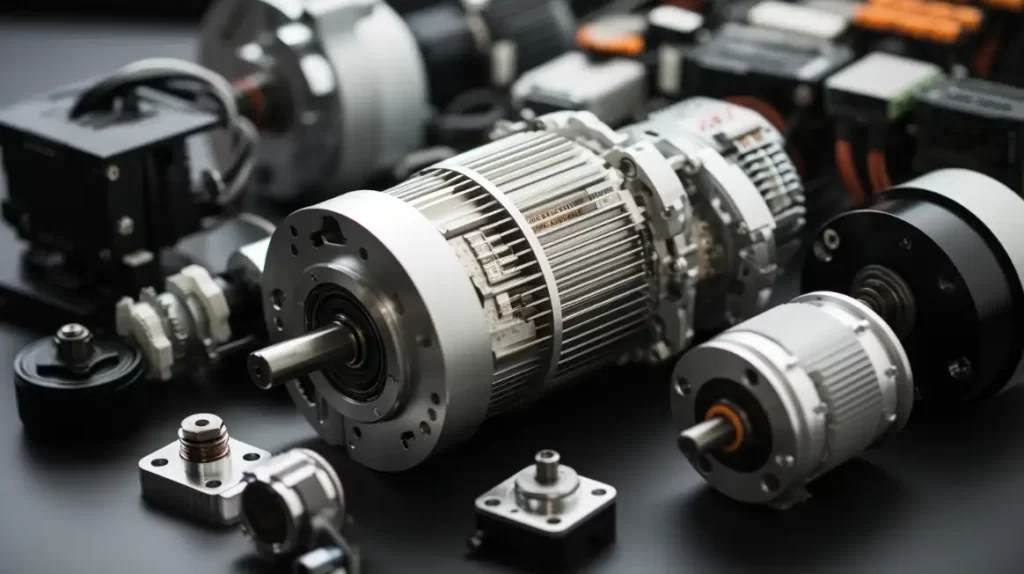
CNC programming and software
You will discover that Shengen’s magic is not just in the machine’s hum or the gleaming of newly cut metal. The sophistication of CNC lies in the advanced software and lines of code driving our operations. Explore the world of CNC software and programming, the unsung heroes of precision manufacturing.
Introduction to G Code
The G-code is the language of CNC machines. This is the language that our CNC machines speak and understand. It guides their every movement. G-code, derived from “geometric codes,” is a command set that determines the machine’s speed, direction, and other essential operations. Each order starts with a letter (such as ‘G’ to indicate a pre-processing function, or ‘M” for various positions), followed by numbers that provide specific instructions. G-code is the basis of Shengen’s precise and efficient production.
CAD/CAM integration
The CAD/CAM Integration is the perfect dance between design, execution, and rhythm. Computer-Aided Design (CAD) allows us to create 3D models that are accurate and detailed of the product. Once perfected, the invention’s design goes to CAM (Computer-Aided Manufacturing). This software then converts the format into G-code instructions for the CNC machine.
This seamless integration allows us to go from conception to production with minimum manual intervention. It ensures both speed and accuracy. The CAD/CAM integration at Shengen is like sketching out a masterpiece and then seeing it come to fruition.
Simulating and Testing
We test our Shengen machines in a virtual environment before we put a design to life. Modern CNC software provides simulation tools that allow us to see the entire machining procedure in a virtual setting. This is a valuable tool. This allows us to anticipate any issues, such as collisions, inefficiencies, or errors in G-code.
We simulate the CNC operation to ensure the machining runs smoothly, efficiently, and without errors. Digital rehearsals are our commitment to quality and perfection.
Materials Suitable for CNC Machining
Our CNC machines have brought countless designs to life, from the metallic sheens of metals to wood’s tactile warmth. I will take you through our diverse range of materials.
Metals (e.g., aluminum, steel)
Metal has always been popular in CNC because of its durability and strength. Here is a look at some of the metals that we work with.
- Aluminum:Aluminum is lightweight and robust. It is a favorite of the CNC industry. It is malleable and corrosion-resistant. It also offers good heat dissipation. People use aluminum in various applications, from consumer electronics to aerospace components.
- Steel: Steel is a material that we use for many projects. It is known for its strength and durability. Its durability makes it perfect for heavy machinery, automotive parts, and tools.
Metals such as these are found at Shengen and reflect the craftsmanship of old. They blend age-old tradition with modern precision.
Plastics (e.g., nylon, polycarbonate)
Plastics are versatile and malleable, offering a wide range of applications.
- Nylon:Its strength and flexibility make it the material of choice for durable parts without weighing too much. Consider gears, bushings, or automotive components.
- Polycarbonate:Transparent, impact-resistant, and used in many electrical components, lenses, and protective shields. The ability to mold it precisely and retain clarity makes it an asset in CNC machining.
We at Shengen love plastics because they are so adaptable. They allow us to create intricate designs while maintaining durability.
Woods, composites
Our CNC machines are not limited to metals or plastics. They can also work with woods and composites.
- Wood:From rich mahogany to versatile plywood, wood has a warmth and tactile quality. Few other materials can match. CNC machining enhances the natural beauty of timber and ensures precision in furniture, artistic installations, and more.
- Composites: Composites blend materials that offer the best in multiple worlds. CNC machining can shape materials with unmatched precision, whether carbon fiber composites offer strength or fiberglass, providing resilience.
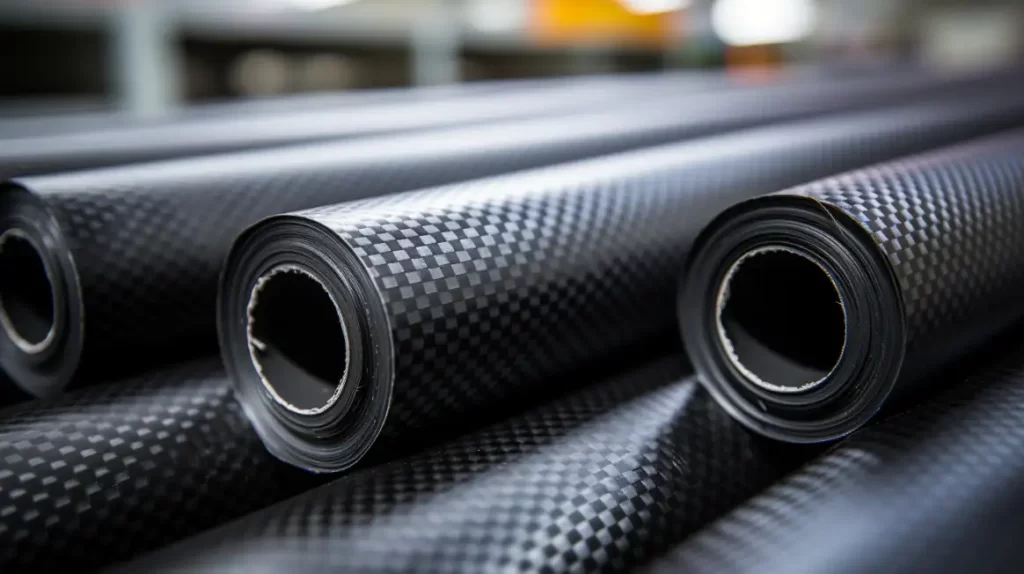
Applications for CNC Machining
CNC machining has impacted our lives in many ways that we may not have even realized. Explore the many applications of CNC machines, from the sky to the devices we hold.
Aerospace and Defense
Precision is a necessity in the aerospace and defense industries. Aircraft components, defense equipment, and satellites require high accuracy and durability. Our CNC machines sculpt materials like aluminum and titanium into intricate parts for aircraft, engine components, and satellites. We are proud to be able to contribute to the aerospace industry, which ensures safety and progress.
Medical Devices
Precision and reliability are critical factors in the medical industry. CNC machines are crucial in producing complex surgical instruments and life-changing implants. Operating rooms and rehab centers often feature materials like stainless steel, titanium, and specialized plastics. This is a testament to the medical community’s confidence in the precision of CNC machines.
Automotive
CNC machining is responsible for the roaring engine and the gleaming chassis. We create precise components such as gearboxes and electronic parts. This ensures that vehicles are robust and reliable. We are proud to contribute to the world’s mobility with precision and passion.
Consumer Goods and Electronics
CNC machining is responsible for the devices we cannot live without, from smartphones to home appliances. CNC machines are responsible for the intricate circuits in our electronic devices, ergonomic designs, and even molds used to shape them. At Shengen, we relish meeting the ever-evolving consumer demands, ensuring that we blend innovation with flawless craftsmanship.
Arts and Crafts
CNC machining is not just for industrial or technological purposes. It also has a place in arts and crafts. We apply this same dedication and precision to craft intricate wooden designs, custom jewelry, aerospace parts, and medical devices. In Shengen, we believe that art and technology can produce beautiful and expressive creations.
CNC Machining Advantages
We have explored the many applications of CNC, so it is time to appreciate the unique advantages CNC machining offers. Let me share with you the many benefits of CNC machining that have made it the cornerstone of modern manufacturing.
Precision & Repeatability
Imagine creating a masterpiece and then being able to replicate it time after time with exact precision. CNC machining promises to deliver on this promise. With the help of sophisticated software and programming, our machines can achieve extremely tight tolerances. This guarantees perfect accuracy for every product. It is not only about one-off precision. CNC machines can provide a high level of repeatability. Each piece is identical, whether it is a thousandth or a first. This ensures the quality and consistency of our products.
Scalability
Dreams and manufacturing should not wait. Scalability is a unique benefit of CNC machining. Once we input a design into the system, scaling it to produce a prototype or 1,000 units becomes straightforward. Automation ensures rapid production while maintaining quality. The system’s speed and scalability provide the timely completion of all projects, whether niche tasks or large-scale production orders.
CNC machining stands out in an age when sustainability and efficiency have become more than just buzzwords. CNC machines are precision-driven, ensuring minimal material waste. We optimize every cut, shape, and drill for the best material use. CNC machining is not only more cost-effective, but it also has a positive impact on the environment. At Shengen, we cherish this efficiency, ensuring it mirrors our dedication to quality and sustainability.
Limitations and Challenges
There are always limitations and obstacles to overcome when using a technology that redefines the norms and pushes boundaries. Let us shine some light on the challenges we and others in the industry face in our quest for perfection.
Initial Setup Costs
CNC machining is a perfect example of the adage, “To make money, you must spend money.” The initial investment in a CNC facility that is state-of-the-art can be significant. The cost of machines, particularly those with advanced capabilities and high accuracy, can be expensive. Software, tools, and other components are also expensive. Although the benefits of these initial costs often outweigh them in the long run, they can be a financial obstacle for many small businesses.
Required Expertise
They are technological marvels but not plug-and-play devices. They require a combination of technical expertise and hands-on experience to operate. A skilled workforce is essential for various tasks, including understanding G-code and setting up machines to ensure optimal performance. We invest heavily in our Shengen team to ensure they are well-versed in CNC operations. For many, however, finding and retaining such expertise can be difficult.
Machine maintenance and downtime
Even the most advanced machines are susceptible to wear and tear. To keep devices operating at their peak, you must perform regular maintenance. Neglect can result in downtime, preventing active production of the appliance. This can cause delays, mainly if an unplanned failure occurs. Rest can extend further if specific components require long lead times. We mitigate this at Shengen by maintaining a rigorous maintenance schedule and having essential elements available. The challenge is to balance maintenance and productivity.
The future of CNC machining
CNC’s journey has been a transformative one but is far from finished. Look into the crystal ball and see the future of precision, automation, and technology.
The Future of Technology
- AI and Machine Learning:Integrating Artificial Intelligence and Machine Learning promises to bring CNC machining into a new era. Machines that can learn from past operations, predict issues, and optimize processes in real time will redefine efficiency.
- Advanced Materials: Research continues to produce new materials that have enhanced properties. These materials will be used by tomorrow’s CNC machines, making products more durable, lighter, and sustainable.
- IoT and connectivity:The Internet of Things promises a connected world. CNC machining is an excellent example of this. It allows machines to communicate, optimize workflows, share data, and ensure seamless integration on the production floor.
- Augmented Reality (AR) and Virtual Reality: They can be used to solve problems in VR environments. Imagine a world where a CNC operator could visualize the entire machining procedure in AR before starting it. This blend of virtual and real can revolutionize the training, design, and maintenance processes.
Integration of Other Manufacturing Methods
- 3D Printing:The distinction between CNC machining, additive manufacturing, and 3D printing is beginning to blur. Hybrid machines are already on the horizon, combining the best of the two worlds – adding material layer by layer and refining it with CNC precision. This integration promises greater flexibility in the design of products and manufacturing.
- Sustainable Manufacturing:Given our environmental challenges, CNC machining will merge with eco-friendly manufacturing techniques. CNC machining is at the forefront of sustainable manufacturing. From using eco-friendly cooling agents to optimizing processes for minimum waste, CNC machining has a lot to offer.
- Cobots:Human operators and robots will work together in the future. They will complement each other. Cobots are designed to integrate seamlessly with CNC operations and collaborate with humans. This will ensure enhanced productivity and safety.
Conclusion
Modern manufacturing requires precision, efficiency, and scalability. CNC machining meets and exceeds these requirements. It bridges the gap between imagination and reality by transforming digital designs into tangible, accurate realities. This bridge has enabled innovations that have shaped our daily lives. From the cars and phones we use to the medical devices that save lives.
Do you need a reliable sheet metal parts manufacturer? Shengen is the place to go. We specialize in sheet metal laser cutting, bending, surface finish, and sheet metal welding. We place a high priority on establishing trust, maintaining standards of quality, providing competitive prices, and guaranteeing timely delivery.
FAQs:
What is the difference between CNC and 3D printing?
In CNC machining, the material is subtracted to form the desired shape. 3D printing is an additive method where layers of material are stacked to form an object. CNC is high-precision and can work with more materials. However, 3D printing can create complex designs and prototypes quickly.
What is the difference between CNC turning and milling?
In CNC milling, the workpiece is stationary, while the cutting tool moves along multiple axes to shape the material. In CNC turning, the workpiece rotates as the cutting tool stays stationary. This is ideal for creating symmetrical or cylindrical parts.
What is the cost of a CNC project?
Several factors influence the cost of a CNC Project:
- Material Type: Some materials are more costly to source and work with.
- Complication: Intricacy
- Time Machine: The more time the machine is in operation, the greater the cost.
- Tool Wear: Certain functions might wear out tools faster, necessitating replacements.
Does CNC work with any materials?
Although CNC machines are very versatile, they may only be compatible with some materials. The suitability of CNC machines depends on their specifications, cutting tools, and desired operation. Metals, plastics, and wood are all common materials.
What is the typical time for a CNC operation?
The length of a CNC operation depends on the project’s complexity, the type of material, and the machine’s speed. Simple procedures could take a few minutes, but more complex designs may require several days.
More Resources:
Comparison of CNC and 3D Printing Techniques – Source: American Micronic
Guide to CNC Materials – Source: American Micronic
The Future of CNC Machining – Source: Wisconsinmetaltech
Hey, I'm Kevin Lee

For the past 10 years, I’ve been immersed in various forms of sheet metal fabrication, sharing cool insights here from my experiences across diverse workshops.
Get in touch

Kevin Lee
I have over ten years of professional experience in sheet metal fabrication, specializing in laser cutting, bending, welding, and surface treatment techniques. As the Technical Director at Shengen, I am committed to solving complex manufacturing challenges and driving innovation and quality in each project.

